Lucia Lee
Last update: 03/07/2025
Computer vision isn’t just tech jargon; it’s a practical tool helping businesses solve real-world problems. From monitoring production lines to enhancing retail experiences, this disruptive technology is driving impactful results across various industries. In this post, we’ll dive into 10 industry-specific case studies of computer vision to see how it is applied in real life.
Computer vision is a field of artificial intelligence (AI) that empowers machines to interpret and understand visual information - such as images, video, or live camera feeds - in much the same way humans do, but often with greater speed and consistency. By using a combination of cameras, sensors, and intelligent algorithms, these systems can identify patterns, detect objects, and extract meaningful insights from complex visual data.
Now that you’ve had an idea of what computer vision is, you might be wondering “How is computer vision used in different industries?”. Let’s take a closer look at the real-world examples and industry-specific case studies of computer vision across the board.
Manufacturing
In the manufacturing industry, computer vision is a cornerstone of modern “smart factory” operations. By leveraging advanced AI models and visual data, businesses can optimize productivity, reduce waste, and increase the reliability of their outputs. Among its most transformative applications is automated quality control, where systems equipped with real-time processing capabilities inspect products as they move along the production line. This ensures that only items meeting strict standards reach customers without slowing down operations.
Computer vision plays a critical role in defect detection, especially for flaws that often go unnoticed by the human eye. These systems use techniques like image segmentation to isolate and analyze specific product components. In object detection, cameras identify and track parts in motion, which is essential during assembly. Combined with 3D modeling, this helps guide robotic arms with precision. Meanwhile, equipment monitoring powered by AI can visually inspect machinery to detect signs of wear, misalignment, or overheating, allowing for preventive action before malfunctions occur.
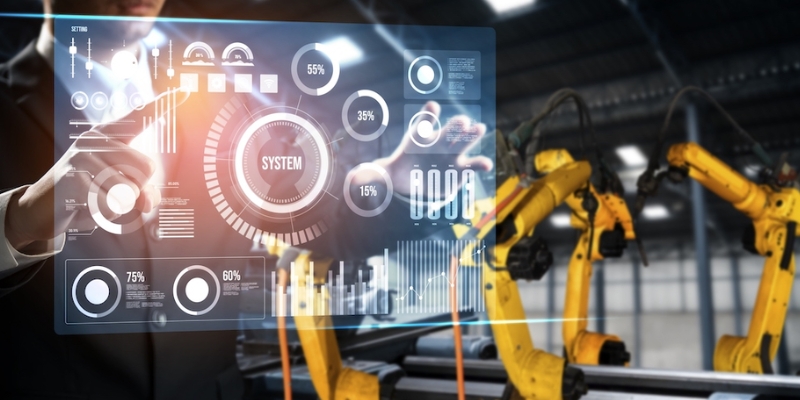
Industry-specific case studies of computer vision in manufacturing
Case study on defect detection using computer vision
A compelling example comes from Tesla’s production line. In their high-tech factories, Tesla integrates AI-driven defect detection tools to ensure exceptional vehicle quality. These systems scan car components during different stages of production, identifying even microscopic flaws such as surface irregularities or improper alignments. Instead of fully replacing human inspectors, Tesla uses a collaborative model: once the vision system flags a defect, it's reviewed by a human technician. This blend of automation and human judgment has not only improved output quality but also reduced the number of faulty units reaching customers.
Retail
In the retail world, computer vision is rapidly reshaping how stores operate, making everything from shopping to security smarter and more efficient. At the front of this evolution is AI visual analytics in retail store case studies showing how visual data can optimize customer experience and streamline operations.
In-store, computer vision enables real-time processing of shopper behavior. Smart cameras can track how customers move through a store, which displays they interact with, and how long they spend in certain zones. This information powers store layout decisions, marketing campaigns, and staffing efficiency. For inventory management, cameras and shelf-scanning robots now detect low stock levels, misplaced products, or empty spaces automatically, helping stores reduce manual labor and improve replenishment speed.
Computer vision is also playing a central role in loss prevention. Through facial recognition, behavioral analysis, and automated monitoring, systems can detect suspicious movements - such as hiding items or skipping self-checkout scans - without relying entirely on human staff. These capabilities allow retailers to significantly reduce shrinkage.
Perhaps the most exciting among retail industry-specific case studies of computer vision is the rise of cashierless checkout systems. Retailers like Aldi and Amazon are creating seamless "grab-and-go" shopping experiences by replacing traditional checkout lines with smart cameras that track items and purchases in real time.
Computer vision retail case study: Amazon Go
A standout computer vision retail case study is Amazon Go, the cashierless store that redefines convenience shopping. Amazon Go uses an intricate sensor fusion system combining ceiling-mounted cameras, shelf weight sensors, and advanced machine learning models.
When customers enter by scanning a QR code or using facial recognition, their identity is linked to a unique shopping session. As they pick up or return items, the system uses computer vision to analyze movements and interactions with products. No barcode scans or cashier interactions are needed - customers simply walk out with their items, and their Amazon account is automatically charged.

Amazon Go's cashierless store
Healthcare
In healthcare, computer vision is rapidly transforming patient care, diagnostics, and hospital management. By combining cameras with intelligent algorithms, this technology enables hospitals and clinics to see more, react faster, and operate more safely.
One of the most impactful applications is in medical imaging. Computer vision systems analyze X-rays, MRIs, CT scans, and ultrasound images to detect abnormalities such as tumors, fractures, or infections - often with higher consistency and speed than the human eye alone. These tools help prioritize urgent cases, reduce diagnostic errors, and support clinicians in making more informed decisions.
Computer vision is also crucial in ensuring hygiene compliance. In high-risk environments like intensive care units or surgical theaters, AI systems can monitor whether staff are following protocols, such as wearing masks, washing hands, or using gloves. This reduces the risk of hospital-acquired infections and helps maintain regulatory compliance without constant manual supervision.
Medical imaging computer vision case study: Intuitive Surgical’s da Vinci system
A standout example of computer vision in healthcare is the da Vinci robotic surgery system developed by Intuitive Surgical. This advanced platform enhances minimally invasive surgeries by providing surgeons with a magnified, high-definition, 3D view of the surgical site. Computer vision is at the heart of this system, helping surgeons navigate delicate anatomical structures with greater clarity and precision.
The da Vinci robot allows for finer movements than the human hand, reducing the chances of accidental damage during complex procedures. With the support of AI-powered visual systems, surgeons can perform intricate tasks more confidently, resulting in fewer complications, quicker recoveries, and better patient outcomes overall.
Transportation
Computer vision is driving major innovation across the transportation sector, improving everything from road safety to traffic efficiency and vehicle automation. By analyzing vast amounts of visual data in real time, AI-powered systems are helping cities and companies move people and goods more intelligently and securely.
One of the most transformative industry-specific case studies of computer vision is in autonomous vehicles. These self-driving cars rely on advanced cameras and AI algorithms to interpret the world around them - identifying pedestrians, road signs, and lane markings, then making split-second decisions to steer, brake, or accelerate accordingly. This real-time object recognition and response is what enables vehicles to navigate safely without human input.
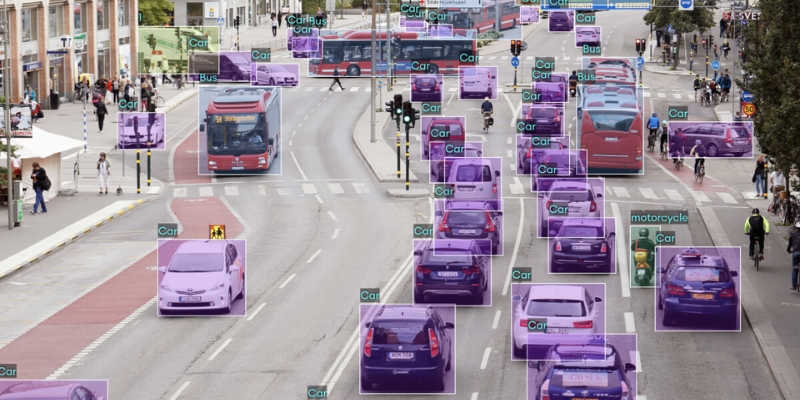
Industry-specific case studies of computer vision in transportation
On city streets, traffic monitoring computer vision helps ease congestion and boost urban planning efforts. Surveillance cameras and drones capture live road activity, while AI systems analyze traffic patterns, detect bottlenecks, and suggest route optimizations. These insights are invaluable for traffic engineers designing smarter intersections or adjusting signal timing to reduce delays and emissions.
License plate detection is another notable case among industry-specific case studies of computer vision. Whether for toll collection, restricted zone access, or tracking stolen vehicles, computer vision systems equipped with optical character recognition (OCR) can identify and log plates instantly - even at high speeds or in low light.
Case study: Tesla’s camera-based autonomous system
Tesla’s approach to self-driving technology offers a compelling real-world case study in vision-based AI. Unlike many other autonomous vehicle companies, Tesla doesn’t rely on LiDAR sensors. Instead, it uses a network of cameras placed around the vehicle to feed visual data into its neural networks.
These systems continuously interpret the environment - recognizing road markings, traffic signals, pedestrians, and obstacles - with real-time feedback. Tesla’s AI mimics human vision and learns over time through reinforcement learning, adapting to new and rare driving scenarios based on past performance. The company also trains its models in simulated environments that mimic challenging road conditions like heavy rain, erratic drivers, or jaywalking pedestrians.
Logistics
Computer vision is rapidly transforming the logistics industry by streamlining operations across the entire supply chain. By enabling machines to "see" and understand visual data in real time, companies can now operate with greater speed, accuracy, and efficiency.
One major application among industry-specific case studies of computer vision is object traceability. Vision systems can identify and track items by reading barcodes, QR codes, or using optical character recognition (OCR) to interpret product labels, container numbers, and license plates. In warehouses, these systems automate inbound and outbound processes by scanning and verifying items against inventory data, reducing human error and improving stock accuracy. At ports and distribution hubs, cameras help track cargo movement, enabling end-to-end visibility.
To maintain operational uptime, equipment monitoring plays a key role. Computer vision systems equipped with thermal or depth cameras can detect early signs of wear, rust, or leaks in conveyors, sorting machines, and other infrastructure. These insights support predictive maintenance strategies, reducing unexpected breakdowns and costly delays.
Computer vision also enhances route optimization by analyzing visual data from delivery vehicle cameras. Combined with GPS and AI, these systems evaluate road conditions, traffic congestion, and even weather in real time to suggest faster and more fuel-efficient delivery paths. This is particularly useful during high-volume periods like the holiday season.
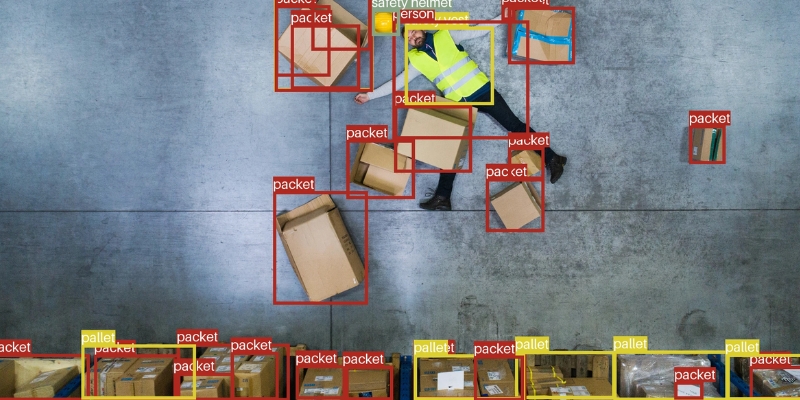
Industry-specific case studies of computer vision in logistics
Case Study: FedEx’s dynamic delivery system
FedEx is a leading example of how computer vision can optimize complex logistics networks. The company integrates AI-powered visual analysis with IoT and GPS data to improve delivery precision and reliability. For instance, if a vehicle’s camera detects road construction or a traffic jam, the system reroutes the driver immediately, selecting an alternative path to avoid delays.
Security
As modern threats become more sophisticated, computer vision is emerging as a crucial component of next-generation video surveillance systems. From identifying potential intruders to flagging unusual activity in real time, computer vision makes security smarter, faster, and more proactive.
One of the most high-impact industry-specific case studies of computer vision is facial recognition deployment, where vision-powered algorithms identify individuals entering restricted zones. Unlike traditional access control, these systems authenticate identities using facial features, even in dim lighting or crowded environments. This is especially useful in high-security areas like airports, corporate facilities, and data centers, offering both convenience and heightened protection.
Another common application is surveillance video analytics example systems, which analyze live camera feeds to detect security anomalies without requiring constant human oversight. These intelligent platforms monitor patterns such as loitering, line crossing, or unusual object placement. For example, the system may flag an unattended bag at a train station or alert staff if someone enters a restricted loading dock after hours.
Case Study: Facial Recognition and Theft Prevention at JJ Liquors, Washington D.C.
A compelling facial recognition deployment case comes from JJ Liquors, a neighborhood store in Washington D.C. For years, owner KJ Singh dealt with persistent shoplifting, even with multiple cameras installed. The missing link wasn’t the lack of footage - it was the delay in identifying suspicious behavior.
By upgrading to a smart AI surveillance system equipped with surveillance video analytics example capabilities, Singh transformed how his store responded to threats. The system not only recognized repeat offenders using facial recognition but also tracked customer behavior and automatically flagged suspicious activity in real time. This meant Singh and his staff could take immediate action, cutting theft incidents dramatically while maintaining a safe and welcoming store environment.
Education
In the education sector, computer vision is emerging as a powerful tool to enhance both safety and student engagement. Its real-time analytical capabilities are transforming how schools and universities manage classrooms, monitor campuses, and personalize learning.
Notable among industry-specific case studies of computer vision in education is campus surveillance, where AI-powered vision systems monitor restricted zones, identify unauthorized vehicles, and detect unattended objects. These systems automatically alert staff to potential security threats, allowing for faster response times and reducing reliance on manual oversight. This contributes to a safer campus environment while freeing up staff to focus on more meaningful interactions with students.
Inside classrooms, computer vision is revolutionizing how educators manage learning environments. By analyzing students' facial expressions and posture, these systems help teachers identify disengagement, confusion, or signs of struggle. Additionally, automated attendance tracking powered by facial recognition reduces administrative burdens and eliminates common errors from manual roll calls.
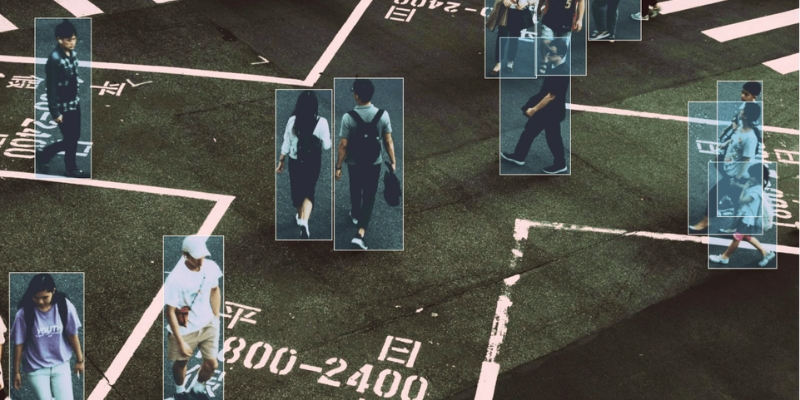
Industry specific case studies of computer vision in education
Case Study: Smart Classrooms at IIT Bombay
A standout example comes from the Indian Institute of Technology (IIT) Bombay, which pioneered a computer vision initiative known as SAFE - Smart Authenticated Fast Exams. In this project, the institute integrated computer vision into students’ personal devices via a custom app. The system allowed for secure, proctored examinations with real-time identity verification, gaze tracking, and behavior analysis - all without needing physical invigilators.
By using this AI-powered system, IIT Bombay not only safeguarded academic integrity during remote assessments but also gained rapid insights into student performance. The initiative significantly improved operational efficiency while respecting students’ privacy. It stands as a powerful model of how computer vision can bring both innovation and integrity to education.
Smart cities
As urban populations grow, cities are under pressure to become more efficient, secure, and responsive. Computer vision is at the core of this transformation, helping governments and city planners make data-driven decisions and automate critical tasks that once relied heavily on manual labor.
A key application is real-time surveillance, where computer vision systems monitor public areas to detect and flag suspicious or dangerous behaviors such as fighting, loitering, or vandalism. Using techniques like pose estimation and action recognition, these systems continuously analyze movement patterns, providing real-time alerts that improve response times for law enforcement and emergency services.
Moreover, critical infrastructure protection is one of the most vital industry-specific case studies of computer vision in smart city initiatives. Computer vision technologies are used to monitor roads, power stations, bridges, and water systems for signs of wear, tampering, or unusual activity. These systems detect subtle anomalies that might be missed by human eyes, allowing for preventive maintenance and resource optimization.
Case Study: Public Safety Surveillance in London
One of the most advanced examples of smart surveillance is London’s long-running “Ring of Steel” - a comprehensive network of digital and analog cameras deployed throughout the city. Originally established to prevent terrorism, the system has evolved significantly with the integration of modern computer vision technologies.
These cameras are now capable of real-time behavior analysis, crowd analytics, vehicle tracking, and even facial recognition. Video feeds from across the city are streamed to centralized command centers, where AI-assisted surveillance helps operators quickly identify suspicious behavior, track individuals across zones, and provide rapid situational awareness to response teams.
Agriculture
The rise of smart farming has reshaped how agricultural operations are planned, managed, and optimized. By integrating computer vision with automation and AI, farmers can now monitor crops and livestock with greater accuracy, speed, and efficiency.
In livestock management, computer vision systems equipped with thermal imaging and motion detection track the well-being of animals in real time. For crop production, drones and fixed cameras equipped with advanced imaging technologies enable AI pest detection in smart farms. These systems scan fields to identify early signs of pest infestations, fungal diseases, or nutrient deficiencies by analyzing subtle changes in leaf color, texture, or shape. Unlike manual inspection, AI models can cover vast areas quickly and recognize risks even before symptoms are visible to the human eye, ensuring faster response and less pesticide waste.
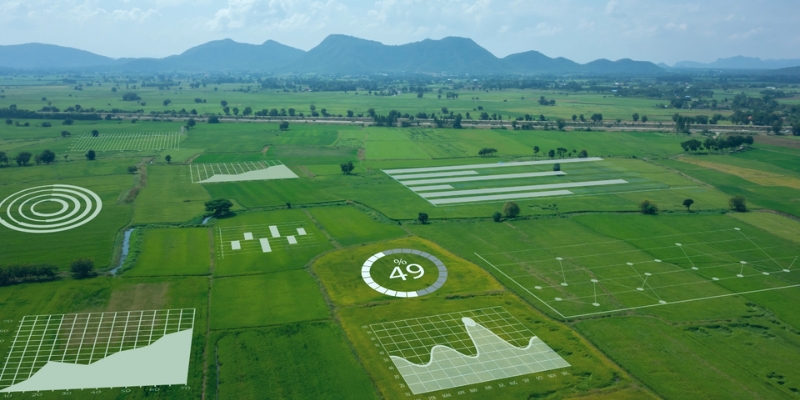
Industry specific case studies of computer vision in agriculture
Also read: Computer Vision for Drones: Benefits, Applications, and More
Computer vision also enhances yield prediction by collecting real-time visual data on plant growth, canopy size, and flowering stages. These insights help farmers anticipate harvest volumes with higher accuracy, enabling better supply planning and resource allocation. Combined with weather, soil, and irrigation data, these predictions play a crucial role in optimizing revenue and reducing loss.
Case Study: Precision Agriculture in California’s Central Valley
A leading example of smart farming comes from California’s Central Valley, where computer vision is being used for precision agriculture. A study by the University of California, Davis found that farms implementing this approach - combining AI-driven crop monitoring, irrigation control, and predictive analytics - achieved up to a 30% increase in crop yields. Just as impressively, water usage dropped by 40%, thanks to accurate assessments of soil moisture and plant health derived from drone imagery and vision analytics.
Disaster response
Computer vision is revolutionizing how communities prepare for, respond to, and recover from natural disasters. By turning visual data into actionable insights, it enables faster decision-making in high-stakes environments where every second counts.
One key example of industry-specific case studies of computer vision is disaster prediction. By analyzing real-time satellite imagery, drone footage, and sensor inputs, computer vision systems can detect early warning signs - such as abnormal cloud formations, shifting terrain, rising water levels, or volcanic activity. These insights help meteorologists and emergency planners issue timely alerts that can save lives.
When disasters strike, computer vision is critical in search and rescue operations. Drones equipped with thermal imaging and object detection algorithms scan large and dangerous areas - like flood zones, forests, or collapsed buildings - to locate survivors. These systems can identify human heat signatures even in low-visibility conditions, speeding up rescue efforts and minimizing risk to first responders. Algorithms trained to recognize body shapes or distinct clothing patterns further increase accuracy in finding missing persons.
In the aftermath, computer vision supports damage assessment and recovery planning. AI tools compare pre- and post-disaster images to identify damaged structures, flooded zones, or blocked roads. This visual analysis helps governments and insurers estimate repair costs, allocate emergency resources more effectively, and prioritize recovery efforts.
Case Study: Accelerated Recovery After Hurricane Harvey
A compelling example of this technology in action took place after Hurricane Harvey in 2017. In the storm’s aftermath, insurance providers deployed computer vision algorithms to analyze drone footage and smartphone images from impacted neighborhoods. These AI systems automatically identified damage to roofs, walls, and vehicles, as well as signs of flooding.
Instead of requiring teams to conduct time-consuming site visits, insurers used image recognition to classify and quantify damage remotely. This approach dramatically reduced claims processing times, enabling faster financial relief for policyholders and expediting recovery efforts across affected communities.
From manufacturing floors to retail aisles, hospital rooms to disaster zones, computer vision is reshaping how industries operate, solve problems, and serve people. These industry-specific case studies of computer vision prove that visual AI isn’t just futuristic - it’s here, and it’s delivering measurable value today.
At Sky Solution, we specialize in computer vision solutions tailored to businesses of all industries and sizes. Whether you're looking to streamline operations, improve safety, or unlock new insights from visual data, our team can help you turn technology into tangible impact. Contact us today for a free consultation!